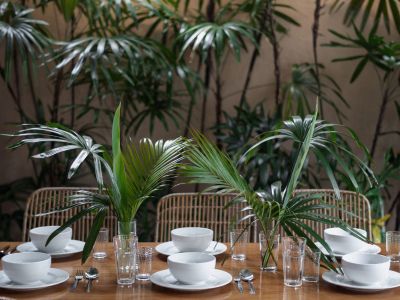Creating a Flower Arrangement with Leaves
Those who have planted a flower garden have likely decided to grow many of their favorite plants. The combination of annuals and perennials can blend together for a stunning display. In deciding to pick flowers from the garden, it is easy to become enamored with the largest and most vibrant blooms. However, a high-quality flower arrangement will often include several parts. Though focal flowers are of great importance, many overlook another key component: the foliage. Flower arrangement foliage, sometimes called greenery, plays an important role in flower arrangements. A bouquet of leaves or leafy stems often serve as a framework for more colorful flowers. They can also be just as beautiful on their own. Flower arrangements with leaves often look more natural and organic in nature, due to their lush green filler. Leafy floral arrangements also provide greater flexibility in terms of vessel used or arrangement style. Learning to use leaves for flower arrangements is an easy way to craft professional looking bouquets straight from the garden.
Best Leaves for Flower Arrangements
Leaves for flower arrangements can vary greatly. Though bouquets of leaves can often be purchased locally, many cut flower gardeners choose to grow their own. Growing your own flower arrangement foliage will ensure a steady supply throughout the entire season. Popular garden options include the use of herbs and shade-loving perennial plants. Mint, rosemary, and various cultivars of sage can all be grown for use in cut flower arrangements. Other ornamental plants, such as dusty miller, can be specifically sowed for use in vases. Fortunately for growers, these common foliage plants will be a beautiful addition to the flower border too. Other leaves for adding to bouquets, either alongside flowers or as their own leafy display include:
PalmsFernsYarrowIvyMyrtleEucalyptusGrevilleaHolly
Branches and foliage from various shrubs can also be used. Before picking and using any type of foliage or greenery in cut flower arrangements, know which plant you’re working with. Since many ornamental plants contain toxic properties, those composing arrangements will need to ensure they are safe to use in bouquets and vases.
